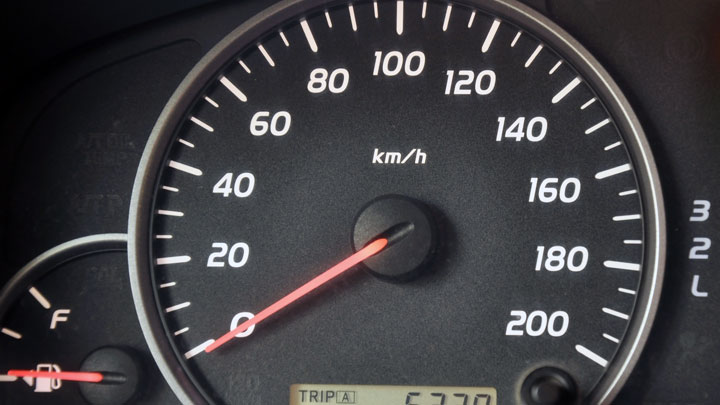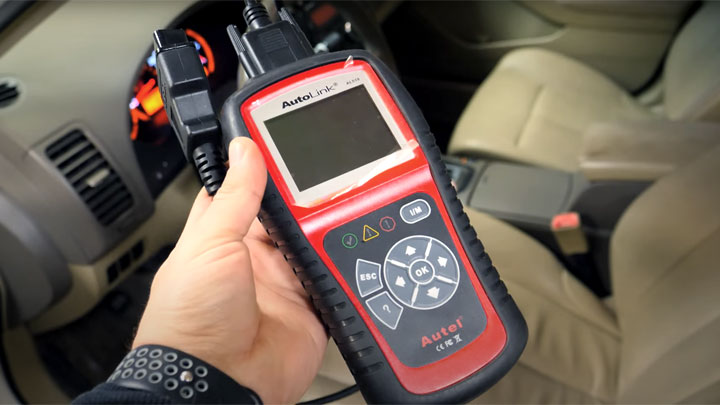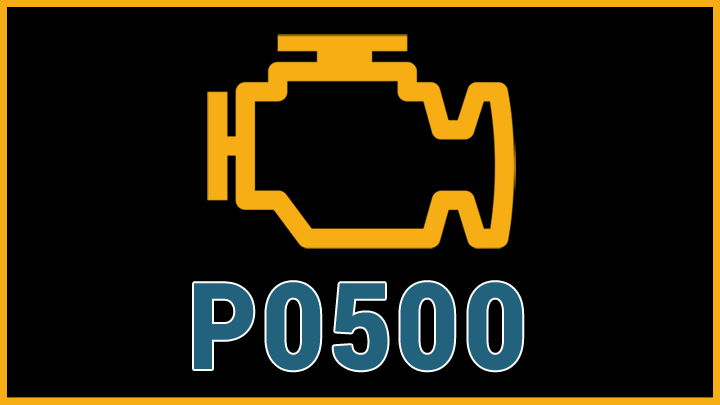Last Updated on December 13, 2021
Today’s vehicles are far more technically advanced than those of yesteryear. Most of a vehicle’s individual functions are now monitored via a network of sensors and corresponding modules. This info is then used to provide feedback regarding system functionality and efficiency.
Additionally, on-board monitoring of this type does uncover the occasional issue that might have otherwise been overlooked. This, in turn, also provides information that can be utilized when attempting to remedy such issues, thereby expediting the repair process as a whole.
One such fault that is often identified through a vehicle’s on-board diagnostic system, is trouble code P0500. This diagnostic trouble code is indicative of speed sensor-related issues, which can ultimately affect the functionality of a vehicle’s anti-lock braking system and speedometer.
Read on to learn more about DTC P0500, as well as how to handle such issues, should they arise in the future.
What Does Code P0500 Mean?
Diagnostic trouble code P0500 is set when a vehicle’s ECM/PCM detects a loss of signal, or the erratic delivery of a signal, from a vehicle’s speed sensor. In most cases, this speed sensor is seated within the tail shaft of a vehicle’s transmission.
A transmission-mounted vehicle speed sensor determines approximate vehicle speed by counting the individual revolutions of a vehicle’s transmission tail shaft. This is accomplished by counting pulses produced by the teeth of a specialty designed tone ring, as they pass before a speed sensor’s receiver.
This tone ring is mounted to a transmission’s tail shaft and typically features a “toothed” outer edge. As the teeth of a transmission’s tone ring circulate in front of a speed sensor, individual pulses are created, most commonly in the form of a sine or square wave.
The faster a vehicle’s speed, the quicker the succession of these pulses. Therefore, a vehicle’s ECM can use such data as a reliable indicator of vehicle speed.
In the case of DTC P0500, a vehicle’s ECM has determined that this data is being presented in an erratic or irrational manner. Alternatively, a vehicle’s ECM might determine that no data is being returned from the transmission’s speed sensor at all.
In certain instances, DTC P0500 can also be used to indicate a fault pertaining to one or more of a vehicle’s wheel speed sensors. These sensors are mounted at each of a vehicle’s wheel-end locations and are used to measure the actual speed of a particular wheel in relation to its other three counterparts.
Symptoms of Code P0500

There are a number of symptoms that often accompany the presence of a P0500 trouble code. While not all of these symptoms are present in every case, most are prominent enough to be of value during the diagnostic process.
The following are several of the most common issues associated with DTC P0500.
- Illuminated check engine light
- Inoperable speedometer
- Erratic shift pattern
- Loss of ABS functionality
- Illumination of ABS light
Causes of Code P0500

Diagnostic trouble code P0500 can be caused by a number of underlying issues, some of which tend to be more prominent than others. Nonetheless, it is extremely important to consider all such possibilities when attempting to diagnose DTC P0500.
The following are several of the most common causes of DTC P0500.
- Malfunctioning vehicle speed sensor
- Damaged wire within vehicle speed sensor circuit
- PCM-related connectivity issues
Is Code P0500 Serious?
Diagnostic trouble code P0500 is typically regarded as being quite serious in nature. This is due to the fact that such issues often prove detrimental to select vehicle functions, especially in those vehicles equipped with an automatic transmission.
Since data gathered and relayed by a vehicle’s speed sensor is used when determining particular shift points, the shifting efficiency of an automatic transmission can be compromised by an active P0500 trouble code.
Additionally, the functionality of a vehicle’s anti-lock braking system can also be compromised.
How to Fix Code P0500

The following steps can be followed when attempting to diagnose and remedy the root cause of diagnostic trouble code P0500. As always, consult factory-specific service literature for your particular make and model of vehicle, before attempting any such repair.
#1 – Check For Additional Codes
Before beginning the diagnostic process, check for the presence of any additional trouble codes. Any such codes that are found should be thoroughly diagnosed prior to continuing.
#2 – Visually Inspect Sensor/Wiring
You will begin by carefully inspecting your vehicle’s speed sensor for signs of impact or damage. Additionally, all circuit wiring should also be checked for fraying or other signs of damage.
Finally, the circuit’s harness-to-speed sensor connector should also be checked for irregularities. Check to ensure that all pins are securely in-place and free of corrosion.
#3 – Road Test With Scan Tool
If the above-mentioned tests have not uncovered any obvious points of concern, a road test will be in order. The vehicle in question should be operated at a variety of speeds by an assistant, while you carefully review sensor feedback via a scan tool.
#4 – Check Voltage With Multimeter
If no feedback was observed during step #3, one should verify that the vehicle’s speed sensor is being provided power and ground as anticipated. This can be done with the use of a multimeter.
If both power and ground are present, as specified by factory service literature, sensor replacement is advised. If these inputs are not present, then wiring or ECM/PCM-related faults become a likely concern.




